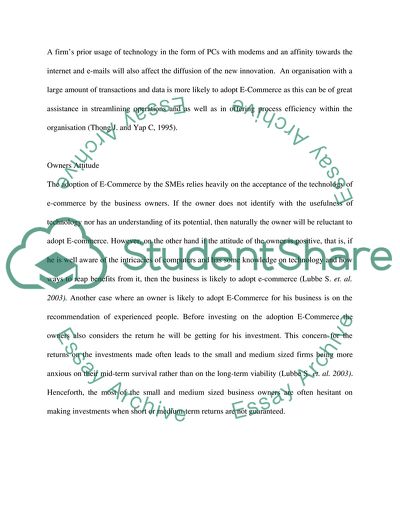Cite this document
(THE MODERATING EFFECT OF CULTURE ON THE INFLUENCE OF ORGANIZATION, Thesis Proposal, n.d.)
THE MODERATING EFFECT OF CULTURE ON THE INFLUENCE OF ORGANIZATION, Thesis Proposal. https://studentshare.org/e-commerce/1721609-the-moderating-effect-of-culture-on-the-influence-of-organization-technology-and-environment-on-the-e-commerce-adoption-among-smes
THE MODERATING EFFECT OF CULTURE ON THE INFLUENCE OF ORGANIZATION, Thesis Proposal. https://studentshare.org/e-commerce/1721609-the-moderating-effect-of-culture-on-the-influence-of-organization-technology-and-environment-on-the-e-commerce-adoption-among-smes
(THE MODERATING EFFECT OF CULTURE ON THE INFLUENCE OF ORGANIZATION, Thesis Proposal)
THE MODERATING EFFECT OF CULTURE ON THE INFLUENCE OF ORGANIZATION, Thesis Proposal. https://studentshare.org/e-commerce/1721609-the-moderating-effect-of-culture-on-the-influence-of-organization-technology-and-environment-on-the-e-commerce-adoption-among-smes.
THE MODERATING EFFECT OF CULTURE ON THE INFLUENCE OF ORGANIZATION, Thesis Proposal. https://studentshare.org/e-commerce/1721609-the-moderating-effect-of-culture-on-the-influence-of-organization-technology-and-environment-on-the-e-commerce-adoption-among-smes.
“THE MODERATING EFFECT OF CULTURE ON THE INFLUENCE OF ORGANIZATION, Thesis Proposal”. https://studentshare.org/e-commerce/1721609-the-moderating-effect-of-culture-on-the-influence-of-organization-technology-and-environment-on-the-e-commerce-adoption-among-smes.


